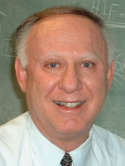Imaging transgene expression for gene therapy Journal Article
| Authors: | Sadelain, M.; Blasberg, R. G. |
| Article Title: | Imaging transgene expression for gene therapy |
| Abstract: | Imaging transgene activity is of great interest to the development and implementation of genetically based therapies. Gene transfer in human cells and in humans is performed using either viral or nonviral vectors. Vectors are the vehicles used to transduce cells that are either cultured and destined to be transfused or implanted in patients (ex vivo gene transfer) or cells residing in the body (in vivo gene transfer). To illustrate the principles involved in imaging transgene expression, focus was given to the herpes simplex virus thymidine kinase gene (HSV1-tk) and the HSV1-tk ganciclovir "drug sensitivity" cancer treatment protocol. The imaging paradigm is based on an enzymatic radiotracer assay in which the market substrate, radiolabeled 2′-fluoro-1-β-D-arabinofuranosyl-5-iodo-uracil (FIAU), is selectively phosphorylated by HSV1-thymidine kinase and "trapped" in transduced cells. Information is presented that shows that the images of FIAU-derived radioactivity obtained using quantitative autoradiography, single photon emission computed tomography, and positron emission tomography imaging techniques reflect the level of HSVI-tk gene expression. |
| Keywords: | signal transduction; review; nonhuman; positron emission tomography; gene expression; phosphorylation; gene transfer; cell culture; image quality; rat; gene therapy; transgene; thymidine kinase; tumor; single photon emission computer tomography; herpes simplex virus 1; herpes simplex virus; ganciclovir; autoradiography; gene activity; clevudine; human; 5-iodo-2-fluoro-1-β- d-arabino-furanosyl-uracil; 124l |
| Journal Title: | Journal of Pharmacy Practice |
| Volume: | 14 |
| Issue: | 5 |
| ISSN: | 0897-1900 |
| Publisher: | Sage Publications |
| Date Published: | 2001-10-01 |
| Start Page: | 376 |
| End Page: | 382 |
| Language: | English |
| DOI: | 10.1106/WKLK-N777-76CV-P88N |
| PROVIDER: | scopus |
| DOI/URL: | |
| Notes: | Export Date: 21 May 2015 -- Source: Scopus |
Altmetric
Citation Impact
BMJ Impact Analytics
Related MSK Work




